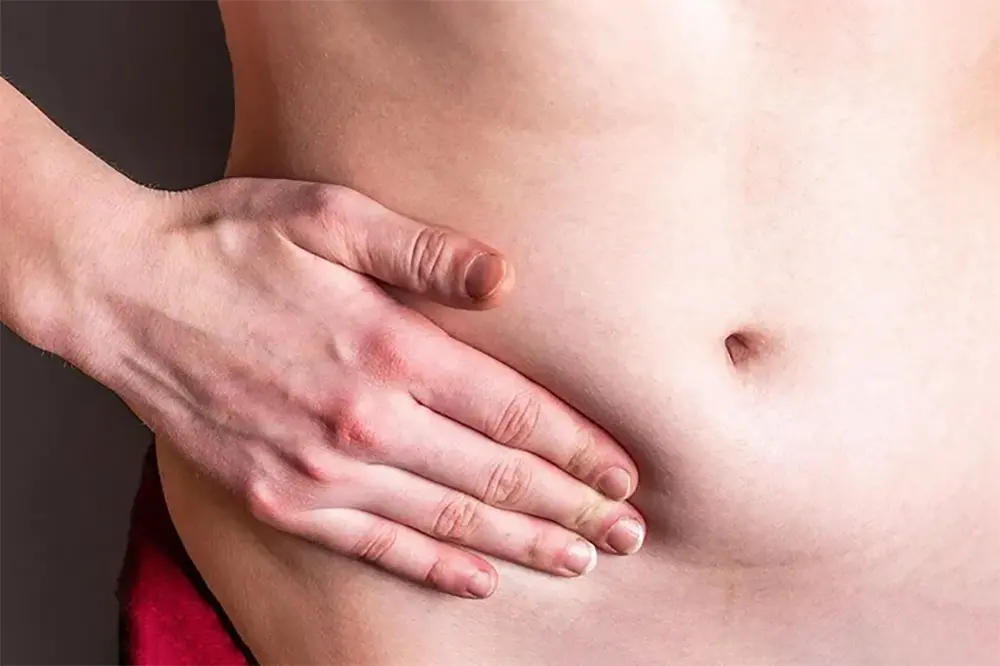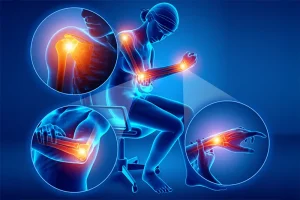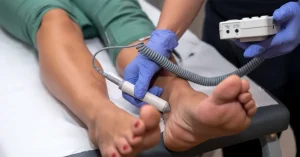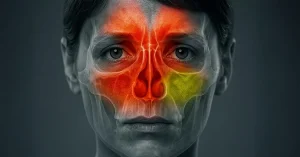What Are Hernias?
Hernias develop when an organ or tissue protrudes partially or completely through its normal cavity via a natural or acquired opening. Continuous and sustained physical exertion is a common cause, but hernias can occur at any age and affect both men and women, including infants. The protrusion creates a visible bulge and is the hallmark of the condition. Prompt medical evaluation is recommended to prevent complications.
Types of Hernias
Epigastric Hernia
Epigastric hernia, also called linea alba hernia, appears in the lower part of the chest just above the navel. The protrusion develops in the abdominal wall and generally does not exceed the size of a golf ball. Patients may notice a small bulge that can increase with physical exertion. These hernias are usually painless but can occasionally cause discomfort.
Femoral Hernia
Femoral hernia is the second most common type of hernia and predominantly affects women. The protrusion develops just below the groin fold, in the middle of the thigh. These hernias can cause a noticeable bulge and may be accompanied by mild to moderate pain. Prompt medical evaluation is recommended to avoid complications.
Umbilical Hernia
Umbilical hernia represents approximately 10% of hernia cases and is frequently seen in children and overweight or obese women over 60. In adults, umbilical hernias can be caused by obesity, pregnancy, or ascites, which is the accumulation of fluid in the abdomen. In infants, it occurs when the umbilical cord does not close completely. The bulge appears around the navel and can enlarge with coughing or straining.
Incisional Hernia
Incisional hernia is rarer and occurs at sites of previous abdominal surgery. It can appear several years after the procedure if the scar weakens or heals improperly. Patients may notice a bulge along the surgical scar, which can cause discomfort or pain, especially during physical activity.
Ventral Hernia
Ventral hernia develops as an opening in the abdominal wall muscles. Although it is a hole, swelling is often visible in the center of the abdominal wall. Patients may experience mild discomfort or pain, particularly when lifting or straining. Surgical treatment is often required for symptomatic cases.
Giant Hernia
Giant hernia is a severe form of ventral or incisional hernia caused by trauma or improper healing of an open abdomen. The large protrusion can interfere with normal bodily functions. Surgical repair is necessary to restore abdominal wall integrity and prevent complications.
Incarcerated and Strangulated Hernia
An incarcerated hernia occurs when a portion of the intestine becomes trapped in the hernia sac. A strangulated hernia is rarer but more dangerous, as it cuts off blood supply to the intestine. Without treatment, tissue necrosis can occur, leading to gangrene, intestinal perforation, and peritonitis. Untreated peritonitis can be fatal, requiring immediate surgical intervention.
Sports Hernia
Sports hernia involves a tear of muscles, tendons, or ligaments in the lower abdomen rather than a weakness or opening in the abdominal wall. Pain is typically located in the groin area, resembling symptoms of inguinal hernia. Proper diagnosis and management are essential for athletes to prevent chronic pain or further injury.
Inguinal Hernia
Inguinal hernia is the most common hernia type, affecting mostly older men. Approximately 80% of all hernia cases are inguinal. The protrusions form in the inguinal fold or scrotum and may cause discomfort, swelling, or pain, especially during physical exertion. Early diagnosis and timely surgical treatment prevent complications and improve quality of life.
Symptoms of Hernias
Hernias cause swelling in the affected area, which increases over time or with physical exertion. Discomfort and constant pain are typical, particularly during exertion or lifting. Nausea and vomiting may occur as pain intensifies. Abdominal hernias can also cause increased abdominal size and severe cramps.
Causes of Hernias
Hernias can result from:
- Obesity;
- Malnutrition;
- Tuberculosis;
- Diabetes mellitus;
- Cystic fibrosis;
- Chronic constipation;
- Chronic cough;
- Prostate adenoma;
- Ascites;
- Large tumors;
- Pregnancy.
Congenital or metabolic factors may also play a role.
Diagnosis of Hernias
Clinical examination is the primary diagnostic method. Doctors examine the patient physically and, if needed, use imaging tests to differentiate hernias from tumors.
Treatment of Hernias
Hernias are treated exclusively through surgery, either laparoscopically or conventionally. Spontaneous healing is rare. Early-stage hernias are easier to treat and carry fewer complications. Modern surgical techniques ensure high success rates.
Complications of Hernias
Untreated hernias can be life-threatening. Strangulation is a medical emergency and may lead to peritonitis or intestinal obstruction. Rarely, hernias may affect reproductive function or skin sensitivity.
Prevention of Hernias
Preventive measures include:
- Maintaining a healthy body weight;
- Avoiding intense or prolonged physical exertion;
- Avoiding heavy lifting;
- Eating a fiber-rich diet and staying hydrated;
- Regular medical checkups and following doctor recommendations.
Post-Surgery Guidelines
Patients can resume normal activities about three weeks after laparoscopic surgery. For classical open surgery, recovery may take 4–5 weeks. Avoid heavy lifting and intense exertion for 2–4 weeks depending on hernia type and surgical complexity. Foods that promote constipation should be limited during the early recovery period. Hernia recurrence occurs in only 3–4% of cases. Schedule a consultation with us to see how we can help.
Author: Dr. Bogdan Amza
Specializations:
- Laparoscopic and classical general surgery;
- Subspecialization in oncological surgery;
- PhD candidate in endocrinological surgery.











